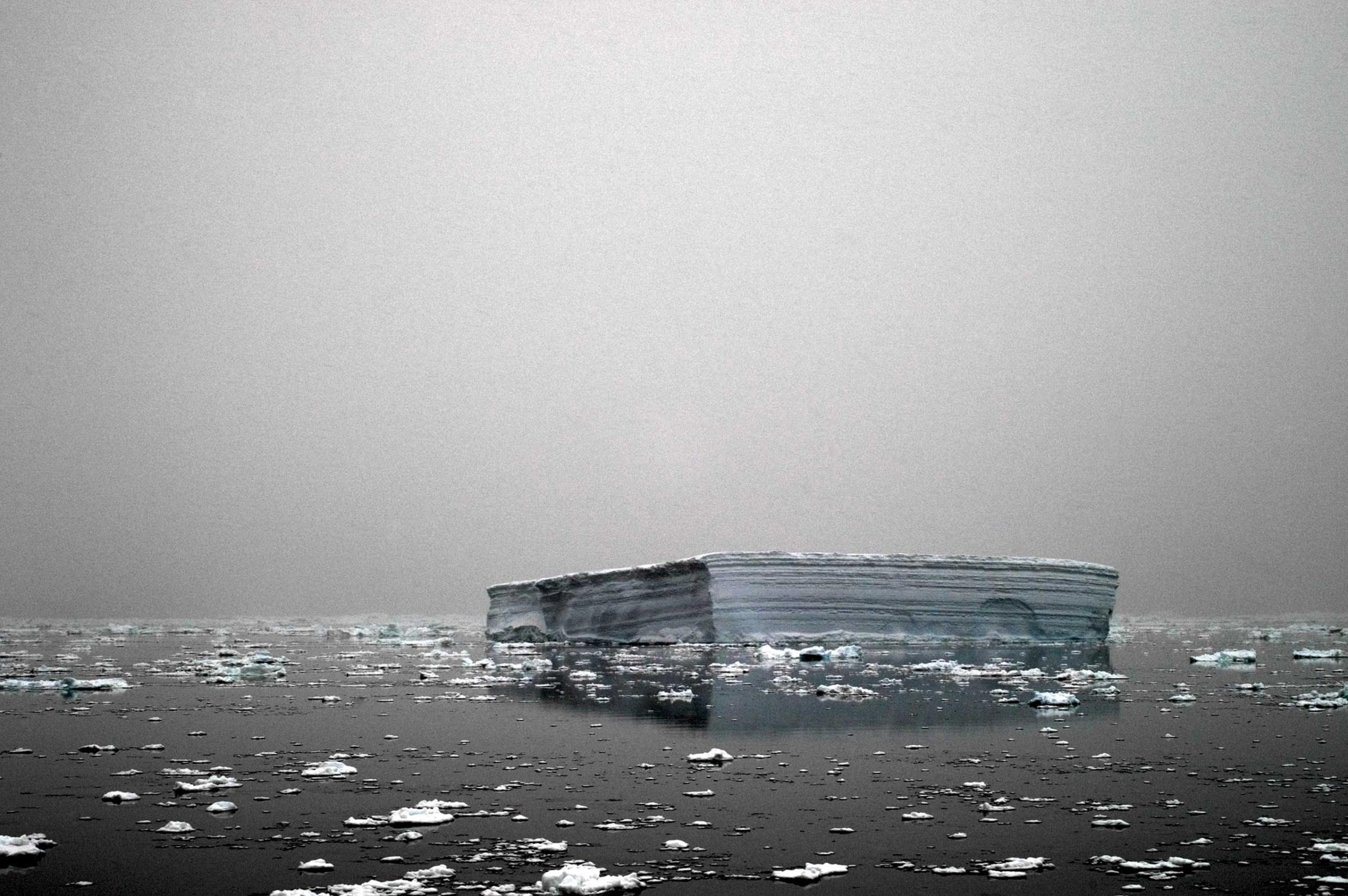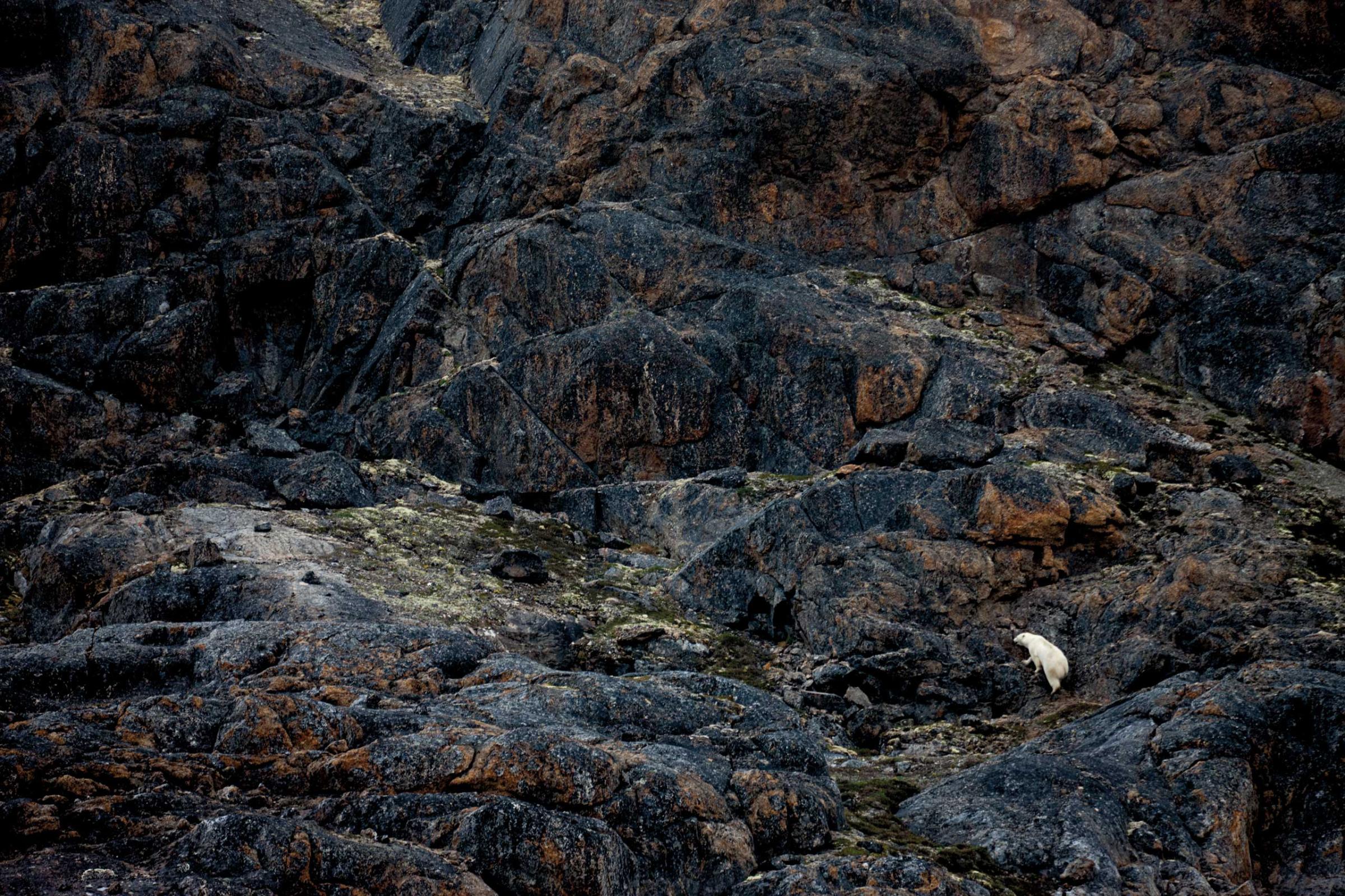
When photographer Camille Seaman was a little girl, one of her favored moments was walking through the woods with her grandfather outside their family house in Long Island, N.Y.
“He would introduce me to the trees,” Seaman tells TIME. “He would say, ‘These trees are your relatives in the same way I am your relative, and you must respect them. You cannot think that you are separate and can abuse them.’”
That way of thinking and her Native American upbringing have followed Seaman, 45, on a decade-long project documenting the delicate polar environment. Her ability to relate to icebergs and glaciers as individuals with distinct personalities has helped her capture their breath-taking yet very intimate portraits. Some of them she knows as persistent, the never-say-never type that drifts in the sea for years until they are little pieces of ice; some are in low spirits, ready to give up, and they can be gone in a moment.
“I don’t see them as just chunks of ice or some frozen water,” she says. “When I see them, I really see all of the history and time that went into making them as exactly what they are.”
Seaman’s journey began with a “comic mishap” as she calls it. In 1999, Her flight was overbooked, and she volunteered to give up her seat in exchange of a round-trip ticket to go to Alaska. As she started walking on the squeaky, dry ice, Seaman had an awakening. “That’s the first time [that I understood] I was standing on my planet,” she says. “Not just a planet or earth, but my planet.”
In the following years, Seaman couldn’t resist revisiting the polar regions. She found a job working as an expedition photographer on ships carrying scientists and tourists to the Arctic and Antarctic. “What was really lovely about the job was I got to really photograph it the way I wanted to photograph it. I had access to a lot of time,” she says.
But being two to three months away on the ship came at a great expense for her family, especially after her daughter was born.
“What kind of mother are you to leave your daughter for months at a time?” she remembers critics saying. “I have to tell them, truly: What kind of mother am I to tell my daughter to go out and live her dreams, be everything she wants to be, if I’m not doing that as an example.”
Seaman says she has instead bounded with her daughter in a deeper, more intense relationship, in which they bypass the mundane talk about homework and focus more on sharing their insights and values about the world.
Her daughter, now 14, has been to more than 100 countries. She saw her first polar bear at three and turned five in the Arctic. “It turned out that when I walked on the ice in Alaska I was actually pregnant with her, so she’s been with me on this entire journey in some form,” Seaman says. She has dedicated her new book, Melting Away, to her, who she says is a driving force for her to continue bringing images to people and raise awareness about preserving the polar icecaps for generations to come.
Unfortunately, this decade-long expedition came to its end in the summer of 2011, when she was photographing in the Arctic on Hurtigruten, an ultramodern Norwegian expedition cruise. The weather was warm, flowers blooming. With little sea ice, their ship was able to travel very far north. The trip, expected to be a comfortable and pleasant voyage, failed to enlighten Seaman and researchers but worried them.
The lack of ice also drove starved polar bears to land, which Seaman remembers as nerve-wrecking. She recently had heard news that a British teenager camper was mauled to death by a hungry bear in Norway. The bear was shot dead, and Seaman felt responsible.
“I never wanted to be the reason that a bear lost its life,” she says. “I just became acutely aware that I was part of the problem – Me, traveling thousands of miles in airplanes and fossil-burning ships. It became my own personal conflict of interest, like I care about the bears and the environment, but I’m a hypocrite if I keep coming.”
She was also frustrated, pondering whether her photographs made a difference. “I just felt a degree of despair. I thought maybe I’m just lacking the skill to communicate clearly in a way people will care. Maybe these photographs aren’t just enough.”
Seaman applied to become a Ted Fellow in the same year. The program helped mentor her in how to convey her ideas and garnered exposure for her venues. She has since been a prominent speaker discussing the polar regions and the danger of climate change.
Camille Seaman‘s new book Melting Away is available now. Her work will be exhibited at the Half King restaurant and gallery in New York beginning Dec. 16.
Ye Ming is a contributor to TIME LightBox. Follow her on Twitter and Instagram.










More Must-Reads from TIME
- Donald Trump Is TIME's 2024 Person of the Year
- Why We Chose Trump as Person of the Year
- Is Intermittent Fasting Good or Bad for You?
- The 100 Must-Read Books of 2024
- The 20 Best Christmas TV Episodes
- Column: If Optimism Feels Ridiculous Now, Try Hope
- The Future of Climate Action Is Trade Policy
- Merle Bombardieri Is Helping People Make the Baby Decision
Contact us at letters@time.com